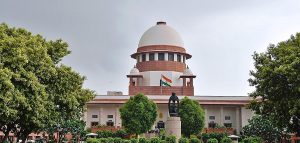NEW DELHI: The Supreme Court on Friday rejected all the petitions seeking 100 per cent verification of Electronic Voting Machines (EVMs) votes with their Voter Verifiable Paper Audit Trail (VVPAT) slips. A bench of Justices Sanjiv Khanna and Dipankar also rejected their prayer to revert to paper ballot voting system.”We have rejected all of them, after referring to the protocol in place, technical aspects and data which is on record,” said the bench in separate yet concurring judgements. The apex court gave two directions saying, “One direction is after the completion of symbol loading process, the Symbol Loading Unit (SLU) should be sealed in containers. The SLU should be stored at least for a period of 45 days.” The top court in it’s second direction said that the burnt memory in the micro controller EVM shall be checked by a team of engineers after the declaration of results on a request by candidates and such a request for verification to be made within seven days after the declaration of results. The expenses for the verification to be borne by the candidates making the request, said the bench, adding that in case the EVM is found to be tampered, the expenses will be refunded. The bench also asked the ECI to examine the EVM for vote counting the paper slips and whether along with the symbol there can be a bar code for each party. Justice Datta in his separate judgement said that blindly distrusting a system can lead to unwarranted skepticism.”Instead, a critical yet constructive approach guided by evidence and reason should be followed… to ensure the system’s credibility and effectiveness,” Justice Datta said in his judgement.Chief Election Commissioner Rajiv Kumar during March 16 press conference on announcement of General Election had said that EVMs are 100 per cent safe. More than 40 times constituional courts have upheld the credibility of EVMs, Kumar had said. The verdict of the top court came on petitions which sought cross verification by the voters of votes cast by them as “counted as recorded” in the EVMs with VVPAT. Currently, VVPAT slips of five randomly selected EVMs in every Assembly segment are verified. Association for Democratic Reforms (ADR), Arun Kumar Aggarwal among others had filed petitions in the top court saying during the hearing, the apex court had said that everything cannot be suspected and they don’t have to be critical about each and every aspect of EVMs. An ECI official was present in the court room during the hearing to explain the working of the EVMs and VVPAT to the bench. He has apprised the court that there had been no mismatch ever between EVMs and VVPAT slips. The petitions sought more extensive verification of EVMs data against VVPAT records. The requirement of the voters verifying that their votes have been “recorded as cast” is somewhat met when the VVPAT slip is displayed for about seven seconds after pressing the button on the EVM through a transparent window for the voters to verify that their vote has been recorded on the internally printed VVPAT slip before the slip falls into the ‘ballot box’, the plea stated. It said that however, there is a complete vacuum in law as the poll panel has provided no procedure for the voter to verify that his/ her vote has been ‘counted as recorded’ which is an indispensable part of voter verifiability.


